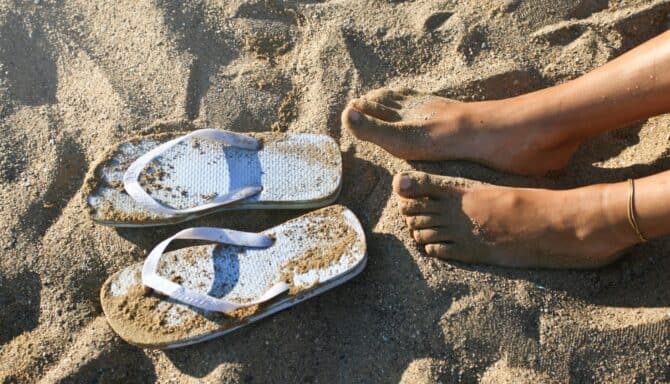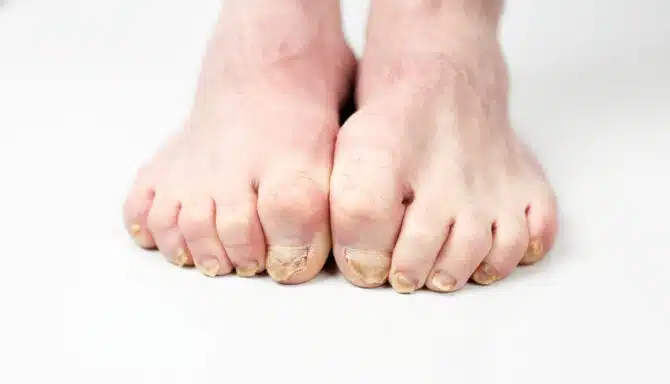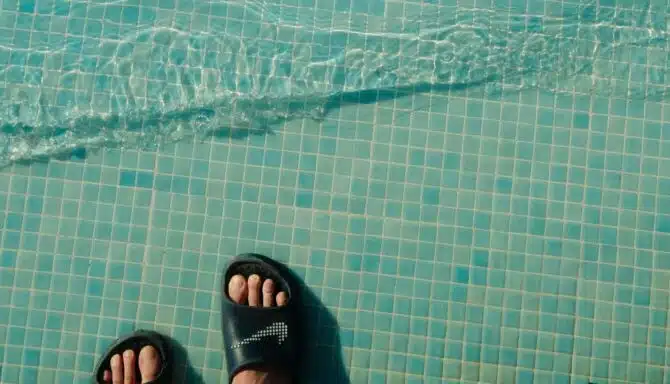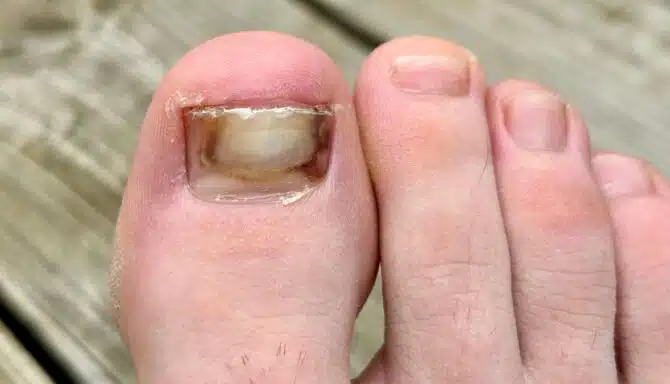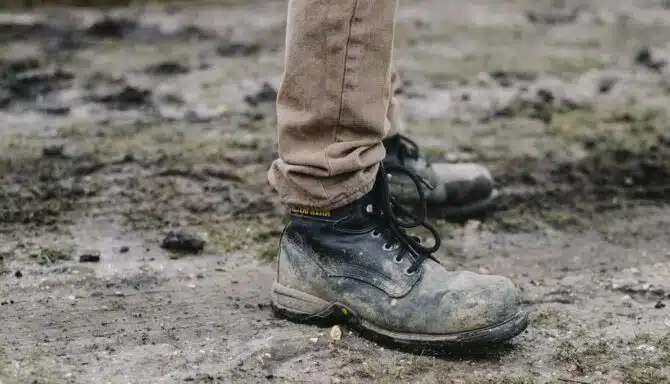You take off your sock and realize that your big toenail has gone from clear to black, and you’re wondering what that means. It’s possible that it could be a subungual hematoma, runner’s toe or fungal infection. Read the list below to find out more about these conditions and how to treat them.
Subungual Hematoma
The first possibility for a black toenail is a subungual hematoma — this is when the blood collects underneath the toenail after it endures trauma. It can happen when you drop something heavy on top of your foot or stub your toe into a hard surface. Think of it like a bruise on the skin. Instead of turning the impacted area purple or blue, it turns black.
Immediately after injuring your toe, you should follow the RICE protocol to reduce the pain and swelling: Rest, Ice, Compress and Elevation. Rest means you should stop doing any physical activity. Wrap a clean bandage around the toe to stem the blood. Put a bag of ice or a cold compress on the covered injury. Then lie down and elevate your foot by resting it on a pillow. This is what you can do right after the moment of “trauma.”
The next step is to be patient and wait for the nail to heal. It will take between 6 to 9 months to go back to normal.
In some cases, you should seek foot care in Toronto from a professional chiropodist so that you can safely treat your injured toenail:
- If the toenail is falling off
- If there is a crack that goes down into the nail bed
- If the toenail shows signs of infection
- If you have diabetes or a compromised immune system
To avoid subungual hematomas, you should wear protective closed-toed shoes when carrying heavy items, watch where you’re walking and try to be aware of your surroundings. There is no way to guarantee that you’ll avoid the problem completely. You don’t tend to drop things onto your foot or stub your toes on purpose. Accidents happen.
Runner’s Toe
There is a reason why a black toenail is often referred to as “runner’s toe.” When someone regularly runs for long stretches, their toenails can turn black because they hit the toe box of the running shoe over and over again. The repetitive trauma leads to the injury.
You can treat a black toenail from running in the same way that you would treat it from an accident. You should visit a chiropodist if your toenail is falling off, if it’s showing signs of infection, or if you have diabetes or a compromised immune system.
One of the best ways to prevent runner’s toe is to get running shoes that are the right size for your feet and have lots of wiggle room for your toes. You don’t want the toenails to press into the top of the toe box. To keep your feet from sliding around in the shoes, you should make sure the laces are tied tight and get custom orthotic inserts to limit any friction. You should also practice proper toenail care by clipping too-long nails straight across, not in a curve.
Avoid wearing coloured nail polish if you’re concerned about runner’s toe. It will be much easier to spot and heal.
Fungal Infection
Normally, a fungal nail infection will change to a shade of white or yellow, but when there is a lot of build-up under the nail, it can also turn black. If you’re dealing with toenail fungus, you should see a chiropodist at Feet First Clinic to get nail debridement, which will make it easier for topical antifungal ointments to penetrate the surface and reach the infection.
If you’re unsure about the cause of your black toenail, go to a chiropodist to inspect it. They will be able to determine if the colour change is caused by trauma, fungal infection or if you need to see a different medical professional. Don’t ignore the problem. Deal with it right away.


